Chawanmushi is a classic Japanese savory egg custard steamed in a cup. The smooth and silky custard is seasoned with dashi stock and filled with pieces of tender chicken, kamaboko fish cake, and mushrooms. Experience authentic Japanese home cooking with this famous appetizer. {Vegetarian adaptable}
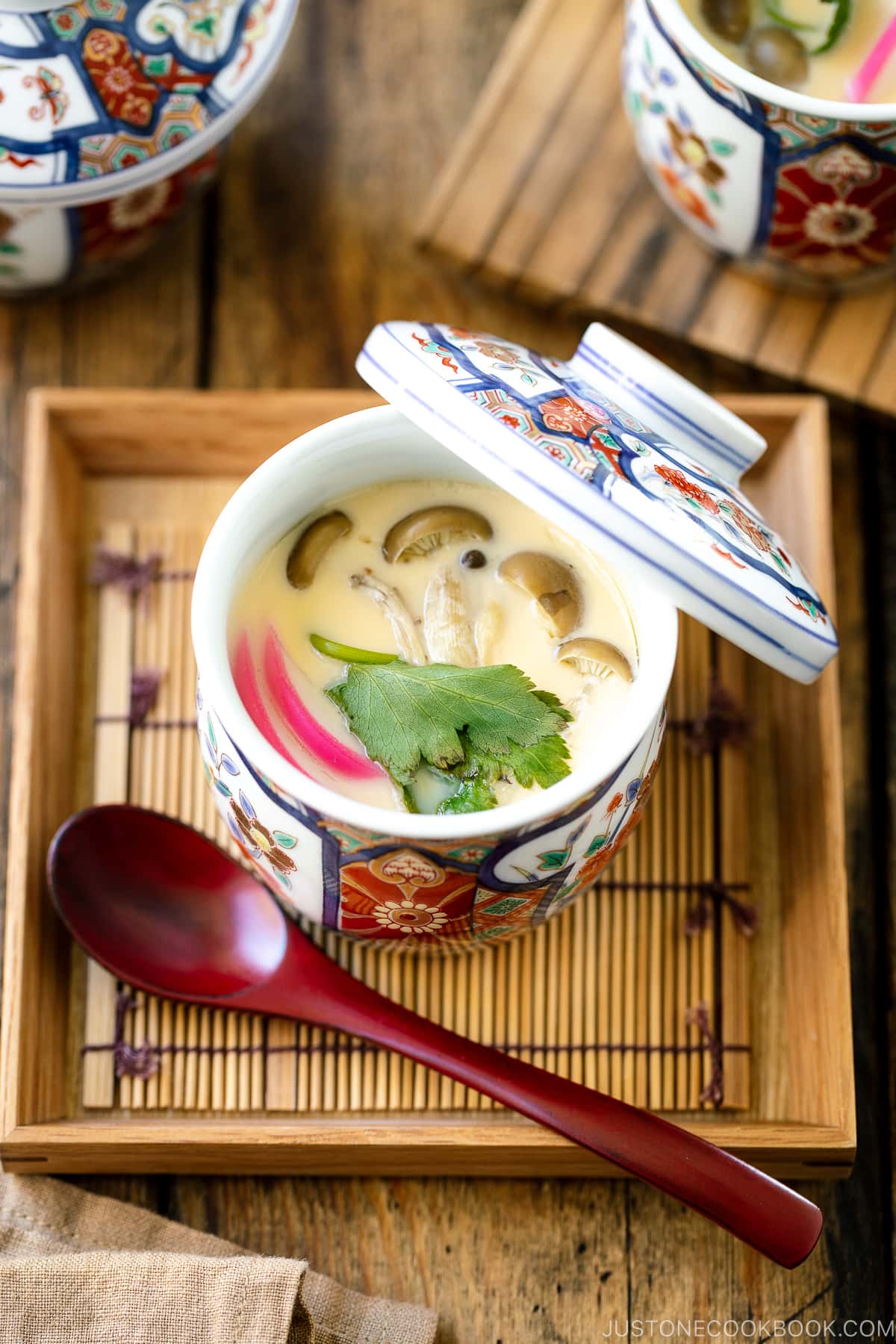
Served in a dainty little teacup, chawanmushi (茶碗蒸し) is a classic appetizer on the menu in many sushi or Japanese restaurants. There are many variations based on seasonal ingredients, but some of the most common ones include shrimp, fish, and vegetables. It can be homey or fancy depending on what goes into the egg custard. To get you started, I’ll be sharing a basic chawanmushi recipe with chicken, along with suggestions for a vegetarian version.
Table of Contents
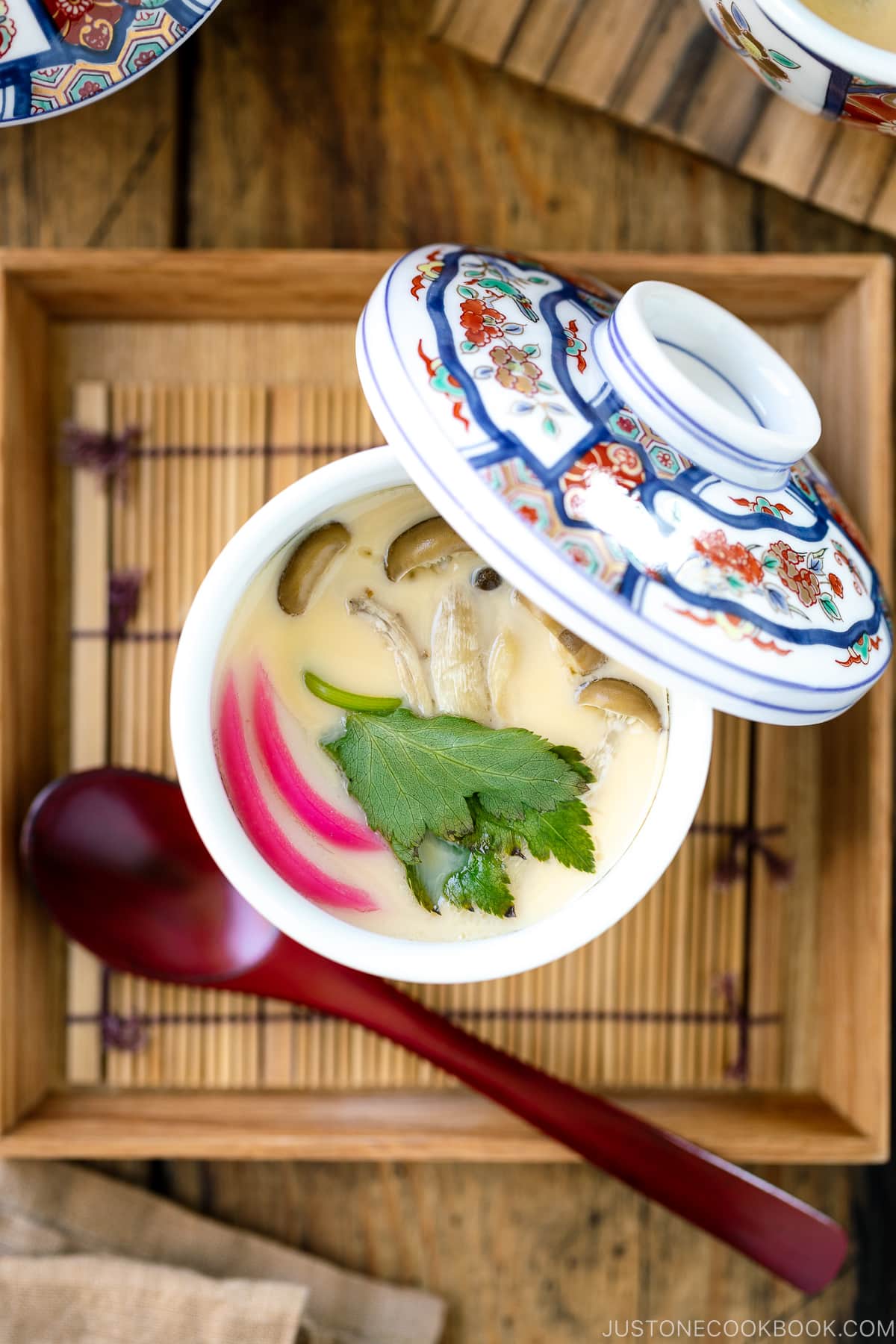
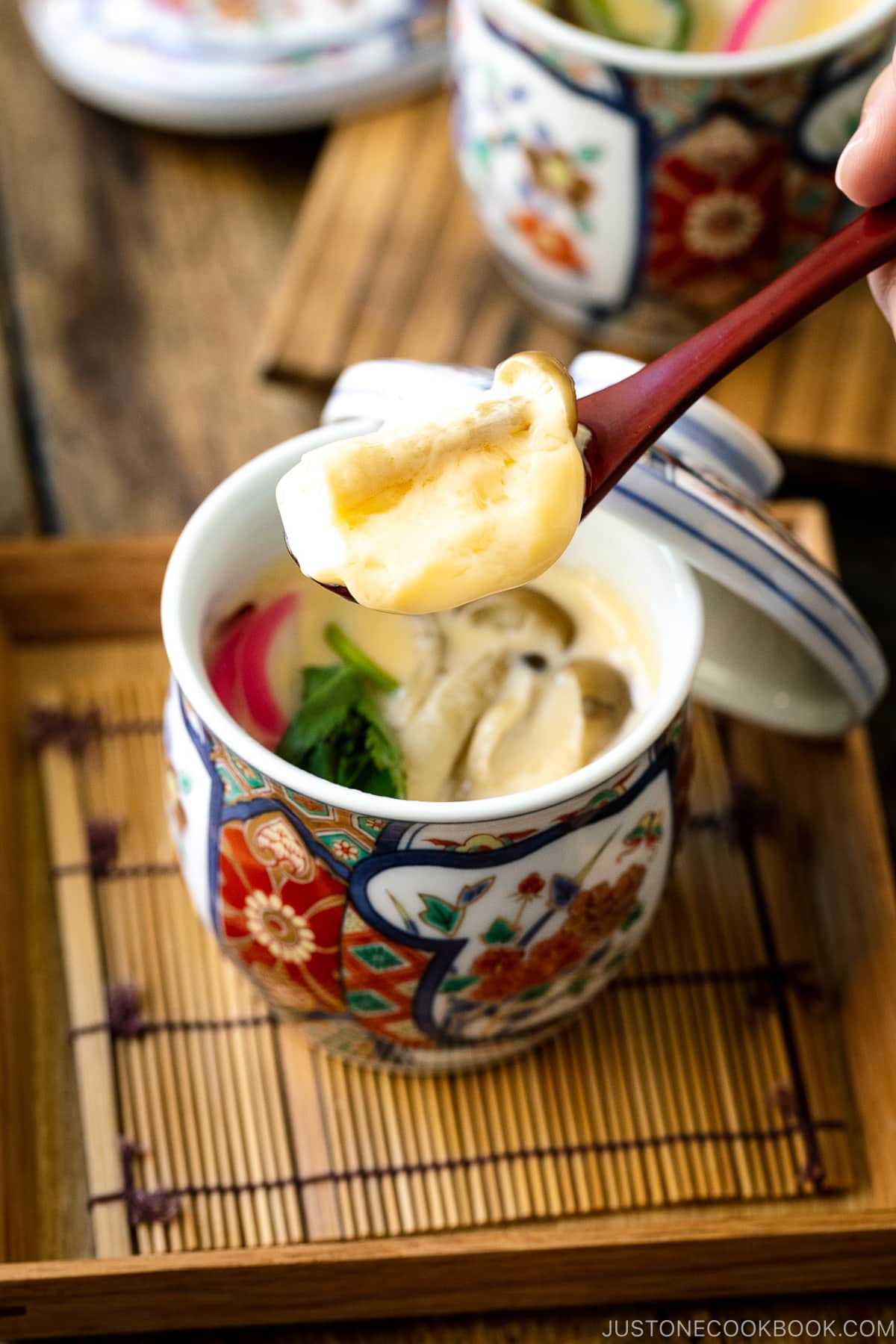
What is Chawanmushi?
Chawanmushi (茶碗蒸し) translates to ‘teacup steamed egg custard.’ We fill the egg mixture with ingredients such as ginkgo nuts, shiitake mushrooms, kamaboko (Japanese fish cake), and subtly flavored with dashi, soy sauce, and mirin. It is steamed in a cup and often served as a cold or hot appetizer. With its ivory color and lovely toppings, it is as tasty as it looks.
- The texture: The steamed custard is smooth and silky, while the sweet-savory meat and vegetables lend a contrasting mouthfeel to the dish. And the broth adds a touch of juiciness, making each bite utterly satisfying and surprising.
- The flavor: You can expect a delicate yet complex flavor from a good cup of chawanmushi. There is a balance of sweetness and saltiness from the different components, while the seasonings—dashi, soy sauce, mirin, and sake—contribute to an umami taste, which is key to making a delicious custard.
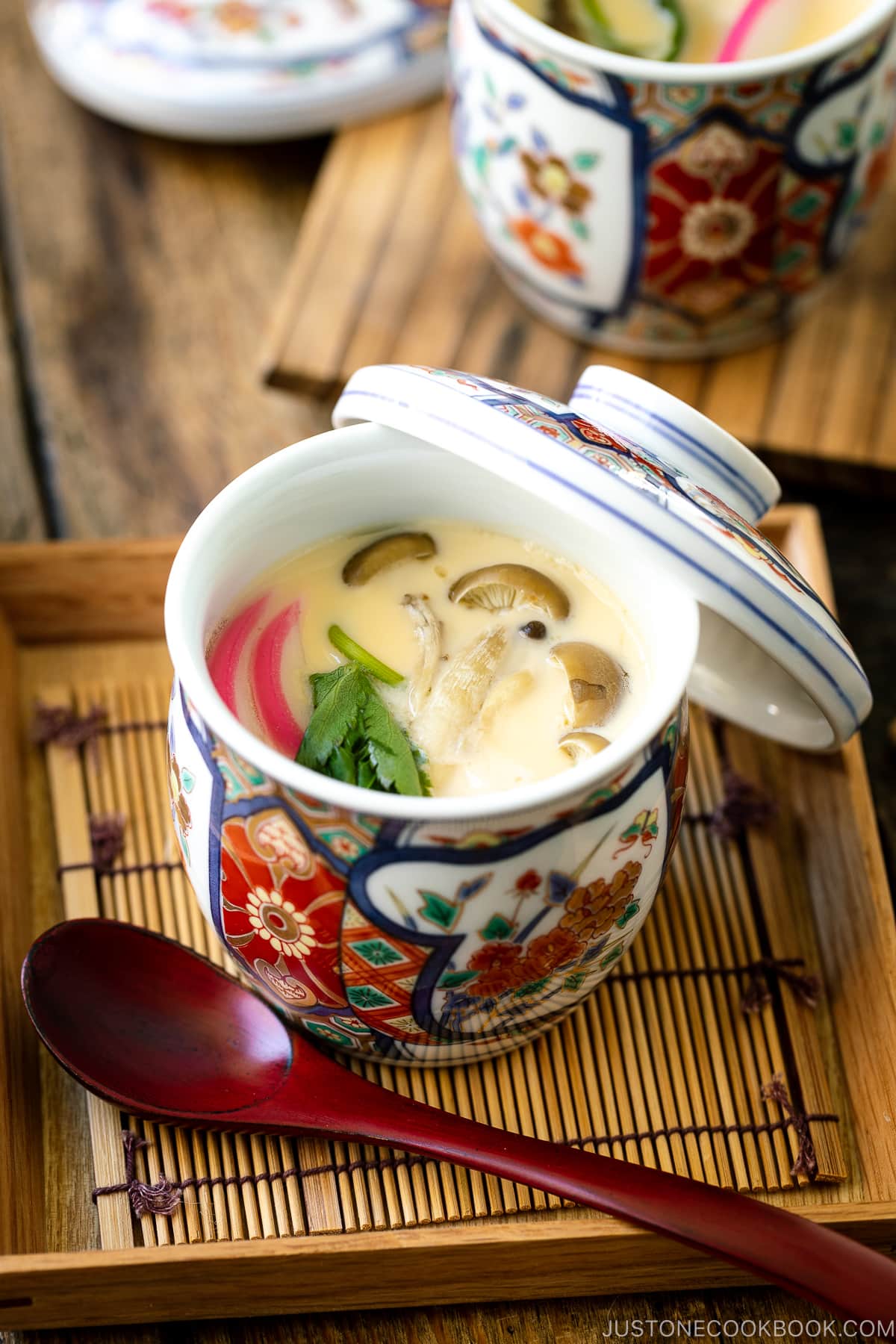
Ingredients for Chawanmushi
- Eggs
- Dashi (Japanese soup stock) – I highly recommend making dashi from scratch or using a dashi packet (instead of dashi powder) since the broth defines the taste of the dish. Use Vegan Dashi for a vegetarian version.
- Seasonings: Soy sauce, mirin, sake, and salt
- Chicken – I used chicken tenders for the recipe, but it can be chicken thigh or breast. Skip for a vegetarian version.
- Kamaboko fish cake – Skip for a vegetarian version.
- Mushrooms – I used shimeji mushrooms.
- Ginkgo nuts (gin-nan) – Optional.
- Mitsuba or green onion
Vegetarian Substitutions
Instead of using chicken and fish cake, you can use various mushrooms and vegetables. Depending on your choice of ingredients, you may need to blanch or cook certain vegetables beforehand, such as carrots.
How to Make Chawanmushi
- Prepare the ingredients. Cut chicken, kamaboko fish cakes, and mushrooms (if necessary).
- Make the custard mixture by combining the eggs, dashi, and condiments.
- Assemble the ingredients and custard mixture in chawanmushi cups.
- Steam chawanmushi in a pot, a steamer basket, or the oven for 20 minutes.
- Serve hot.
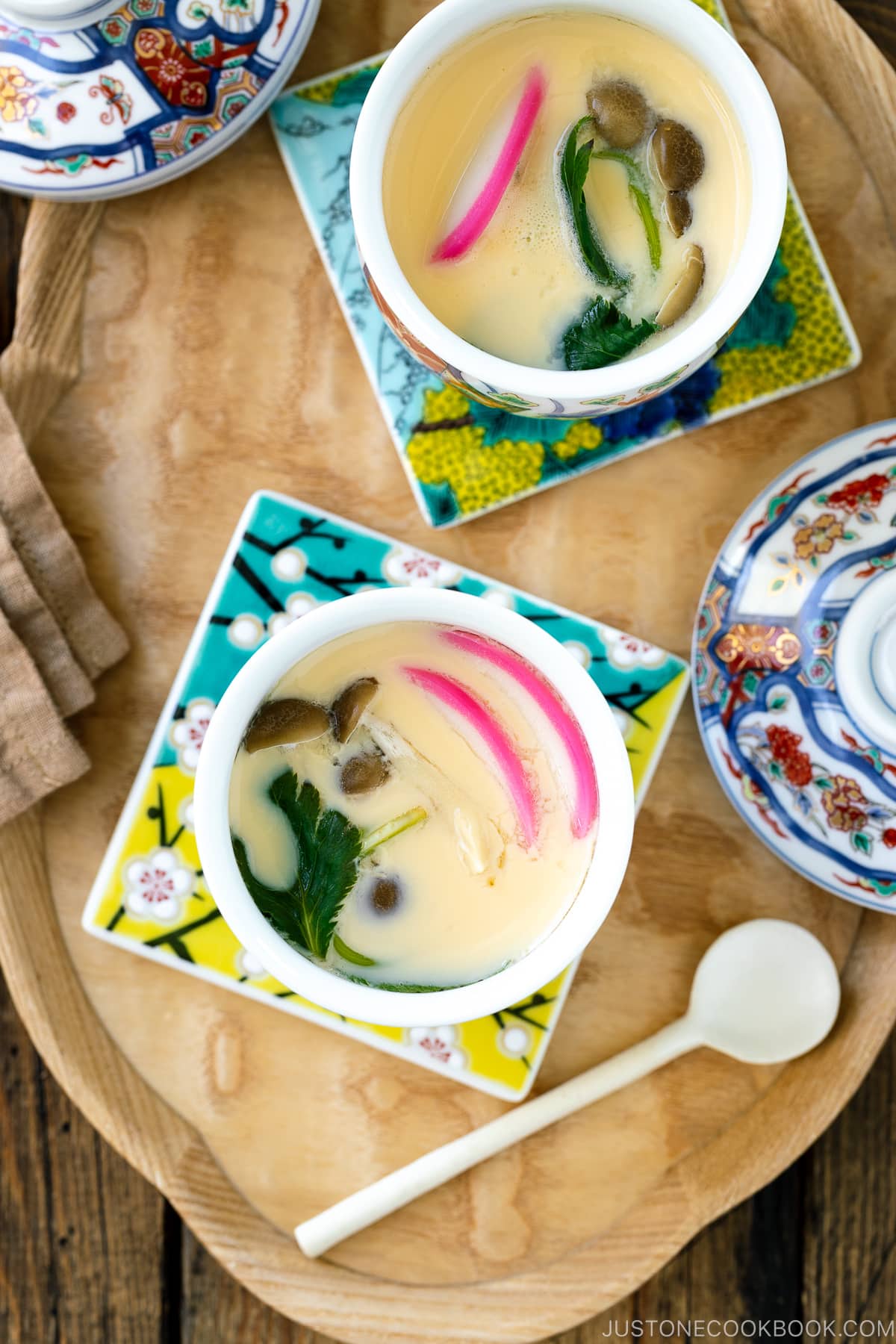
Chawanmushi Steamer Setups
Chawanmushi must be cooked with gentle heat, or the custard will develop small bubbles and a rough texture. You can use the following 3 methods to cook chawanmushi:
- Cook chawanmushi in a pot: I use this method for my recipe. Please read the instructions on the recipe card below. Boil water in a pot large enough to hold the steaming cups. Once boiling, reduce the heat to the lowest setting and gently place the cups in the hot water. Cook covered with the lid slightly ajar to let the hot steam escape. This creates a gentle steaming condition inside the steamer.
- Steam chawanmushi in a steamer basket: You can use a traditional steamer to make chawanmushi. Do not cover the chawanmushi cups directly. Instead, wrap the steamer lid with a large kitchen towel to prevent condensation from dropping into the egg custard during steaming. Place the steamer cups inside the steamer basket and leave the lid slightly ajar to let the hot steam escape.
- Steam in the oven: Preheat the oven to 350ºF (180ºC) and fill a roasting pan (or deep baking dish) with 1″ (2.5 cm) boiling water. Cover the steaming cups with the lid or aluminum foil and place them inside the roasting pan.
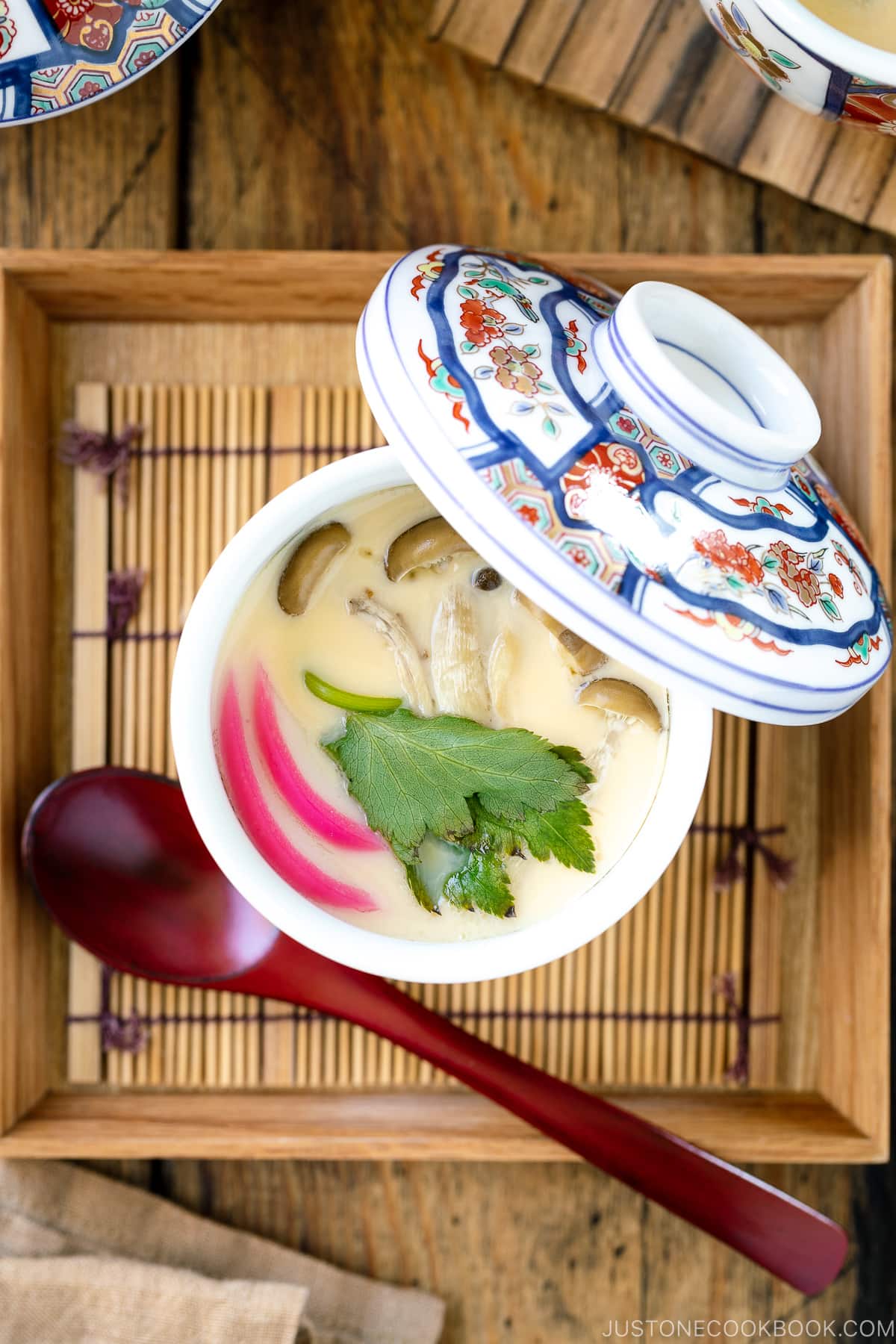
Cooking Tips
- The egg-to-dashi ratio is 1 to 2.5. Many professional chefs and home cooks use a ratio of 1 to 3. However, I prefer a slightly more eggy taste in my chawanmushi, so I use 2.5. First, measure the weight of the eggs, and then multiply by 2.5 to determine the amount of dashi needed. For example, 3 eggs (150 g) x 2.5 = 375. So you will need 375 ml of dashi.
- Strain the egg mixture. Passing the egg mixture through a fine-mesh sieve helps to remove any stringy strands of egg whites, resulting in a smooth and silky custard.
- Use room-temperature ingredients. Make sure your ingredients are not cold or frozen. The egg mixture will cook fast, and your ingredients may not cook through evenly. Also, spread out the ingredients so the heat can pass through; for example, arrange the chicken in a single layer instead of stacking up.
- Cook on a gentle heat and keep the lid slightly ajar. When chawanmushi has a porous texture with tiny visible holes, which we call “su” (すが入る), it is considered a failure. These holes in the steamed egg custard are a clear indicator of overcooking or using high heat. Your goal is to make chawanmushi without these holes. You must be careful with cooking time and heat control. Avoid boiling the custard mixture by maintaining the simmering water at 176-194ºF (80-90ºC).
- Check doneness by inserting a skewer. When you insert a bamboo skewer into the center of the chawanmushi and clear juice comes out, it’s done. If the juice is not clear, cook it longer. You can also tilt the chawanmushi cup to see if it is solidified, but be careful as the cups are extremely hot.
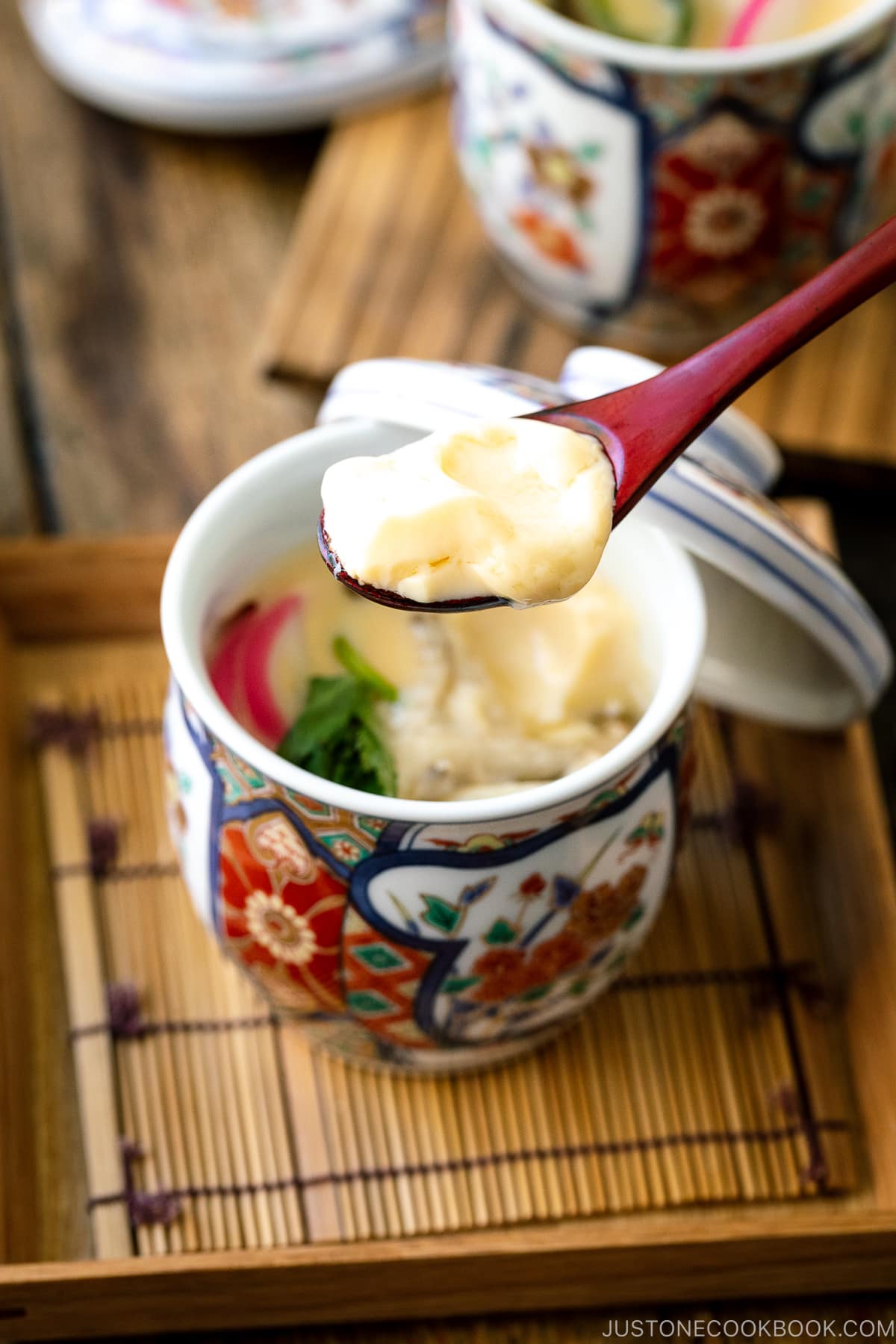
How to Enjoy Chawanmushi
Chawanmushi is typically served hot as an appetizer. Since the custard is very delicate and breaks easily, we eat chawanmushi with a small wooden or lacquer spoon.
Where to Buy Chawanmushi Cups
Chawanmushi is typically served in a special small cup with a lid. You can buy chawanmushi cups at JOC Goods.
Alternatively, you can use heat-resistant ramekins, pretty little small bowls, or mugs to prepare the savory steamed custard. Just make sure they are not too thick as the heat will be hard to penetrate.
Other Delicious Chawanmushi Recipes
There is really nothing like a silky custard with a savory broth topped with delicacies to soothe the hungry stomach while you wait for the main meal to be served. I hope you give this recipe a try because it is easy and practical to make at home.
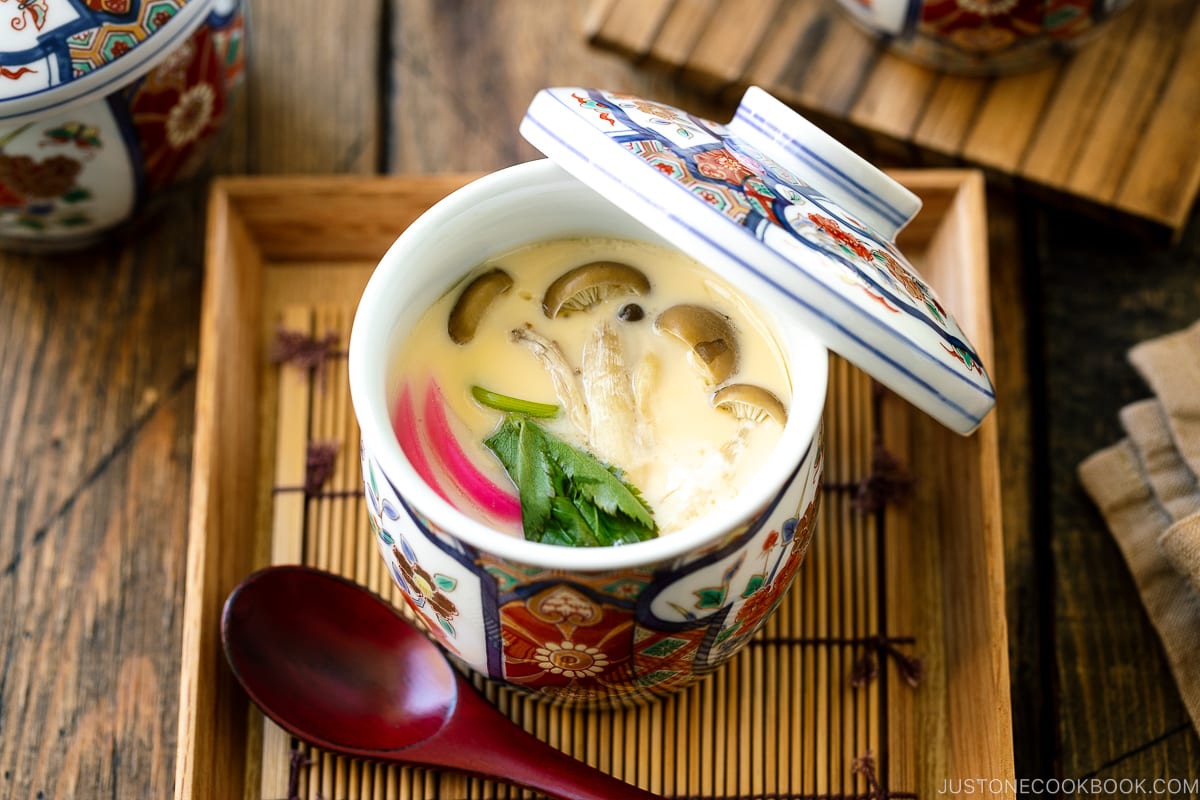
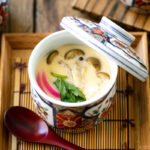
Chawanmushi (Japanese Savory Steamed Egg Custard)
Video
Ingredients
- 2 chicken tenders (skip for vegetarian)
- 1 Tbsp sake (for marinating the chicken)
- 8 slices kamaboko (fish cake) (skip for vegetarian)
- 1.8 oz shimeji mushrooms (roughly ½ package)
- 4 sprigs mitsuba (Japanese parsley) (or 1 green onion/scallion)
- 8 ginkgo nuts (pre-cooked; optional)
For the Custard
- 3 large eggs (50 g each w/o shell)
- 1¾ cups dashi (Japanese soup stock) (approximately; calculate the exact amount in the instructions; use Kombu Dashi for vegetarian)
- 1 tsp mirin
- 1 tsp soy sauce (use light-colored usukuchi soy sauce, preferably)
- ½ tsp Diamond Crystal kosher salt
Instructions
Before You Start…
- Each of my chawanmushi cups holds up to 200 ml. Please note that the size of the cups affects the cooking time. Do not choose cups with thick walls as the heat won‘t penetrate them easily. You can use aluminum foil to cover the cups if they don‘t have lids. You can buy chawanmushi cups at JOC Goods.
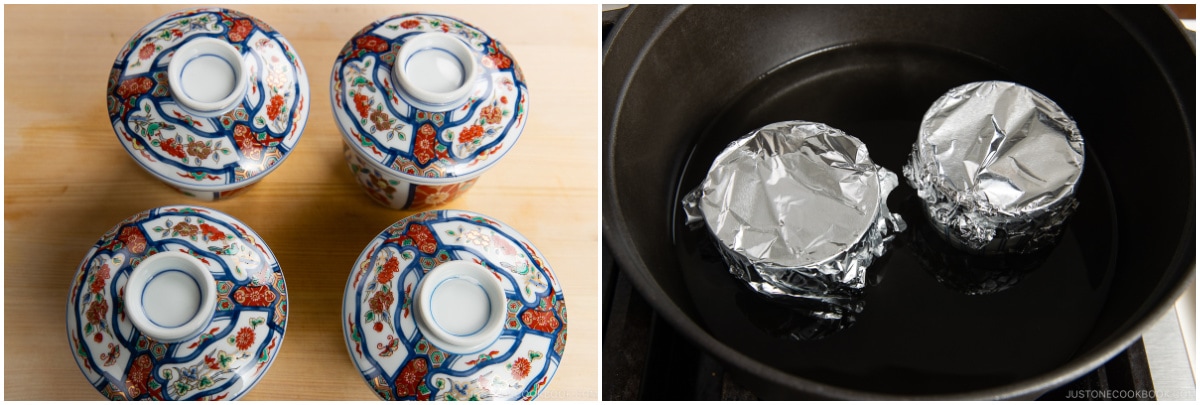
To Prepare the Hot Water Bath
- In a large pot, place the chawanmushi cups (with their lids on) to make sure they fit in the pot. Then, pour enough water to reach halfway up the sides of the cups. Remove the cups and cover the pot with a lid. Bring the water to a boil and turn off the heat. Meanwhile, prepare the ingredients.
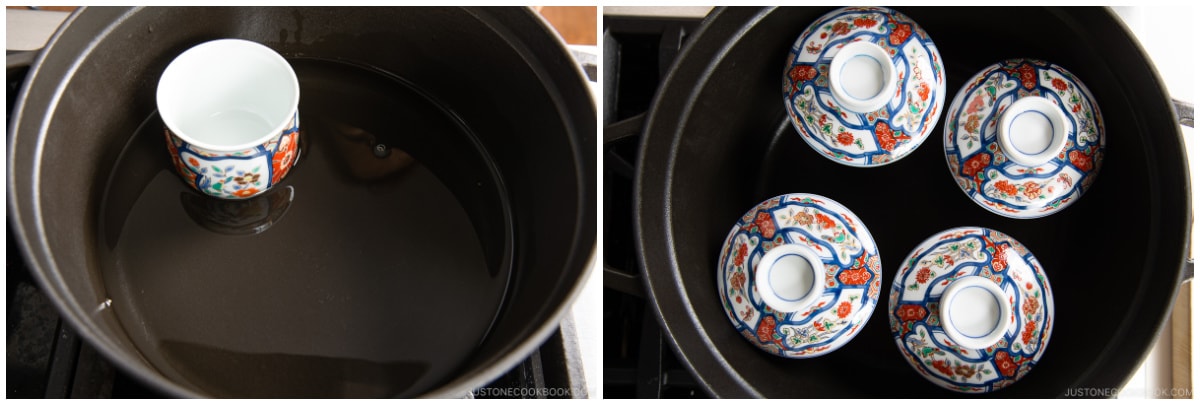
To Prepare the Ingredients
- Gather all the ingredients.
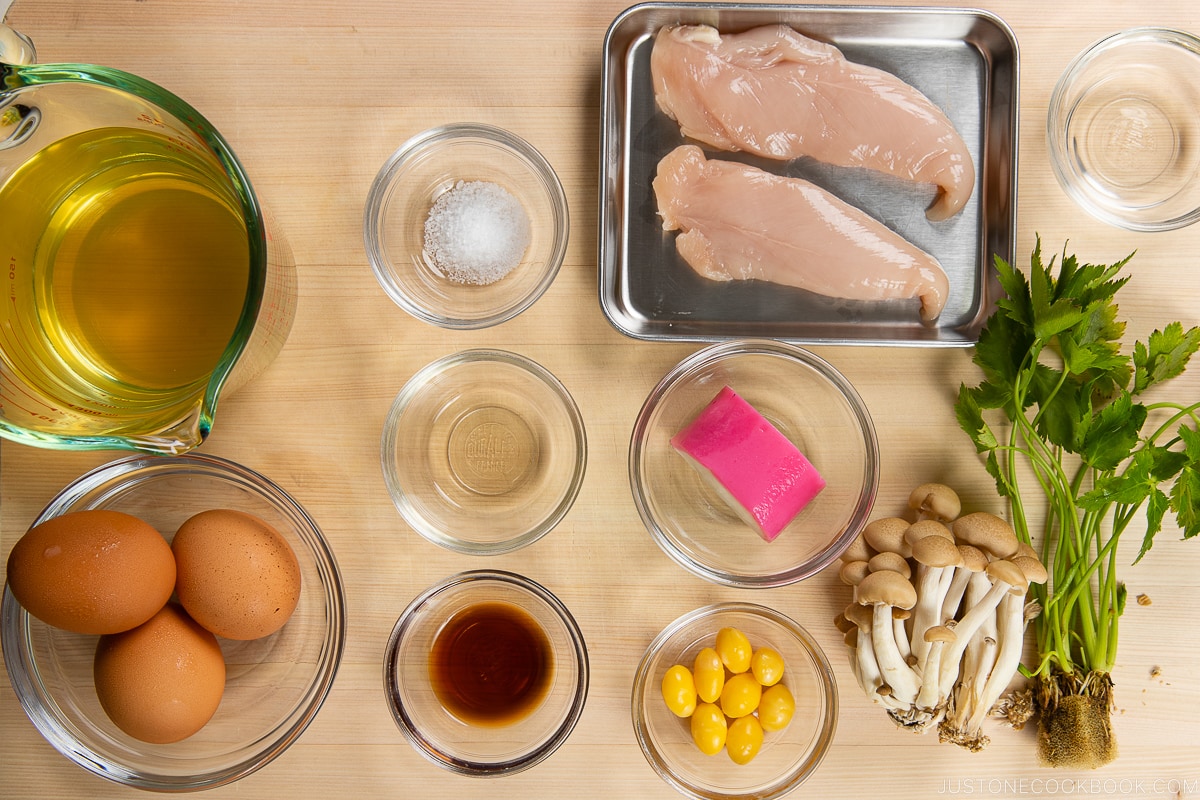
- Cut 2 chicken tenders into ½-inch (1.3 cm) pieces and put them in a tray or bowl. Add 1 Tbsp sake to coat the chicken pieces and set aside for 10 minutes.
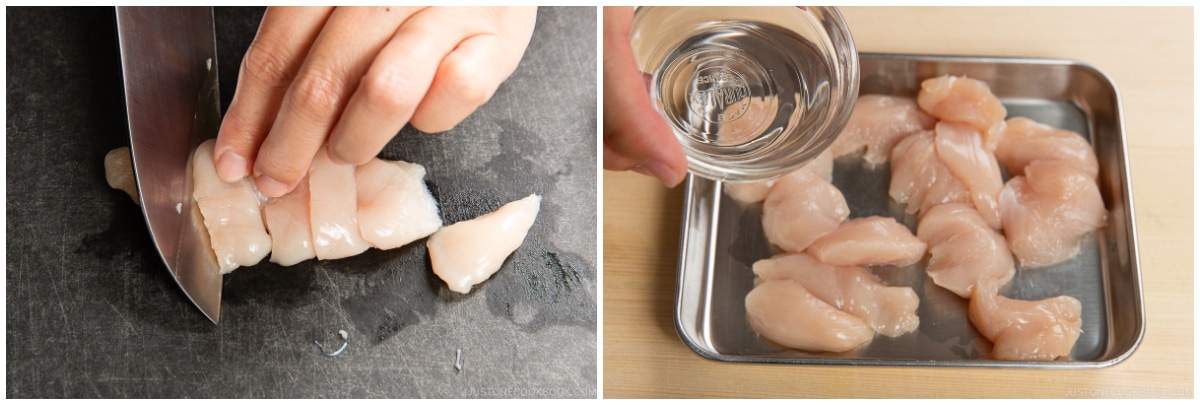
- Cut your 8 slices kamaboko (fish cake) thinly. Trim off the bottom of 1.8 oz shimeji mushrooms and separate them into small clusters.
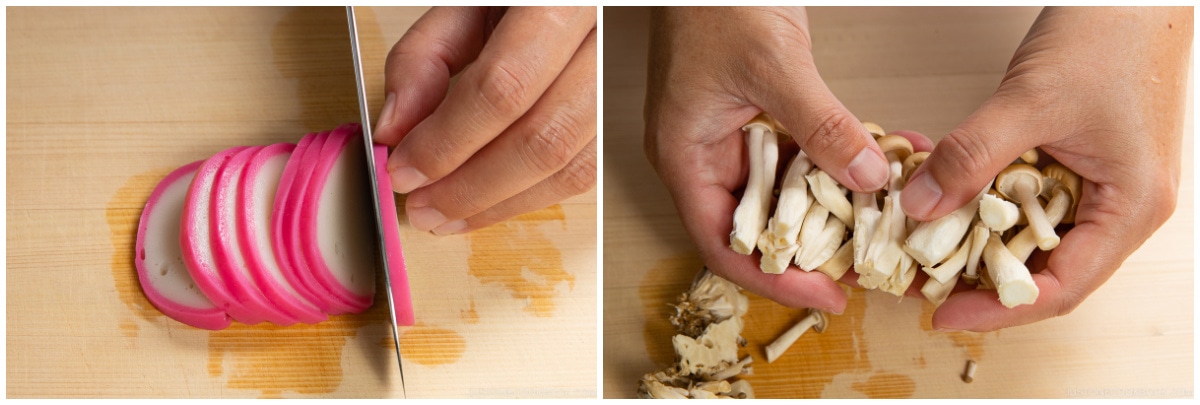
- Make a knot in each stem of 4 sprigs mitsuba (Japanese parsley) (see photo). If you are using green onion instead, cut it into thin slices.
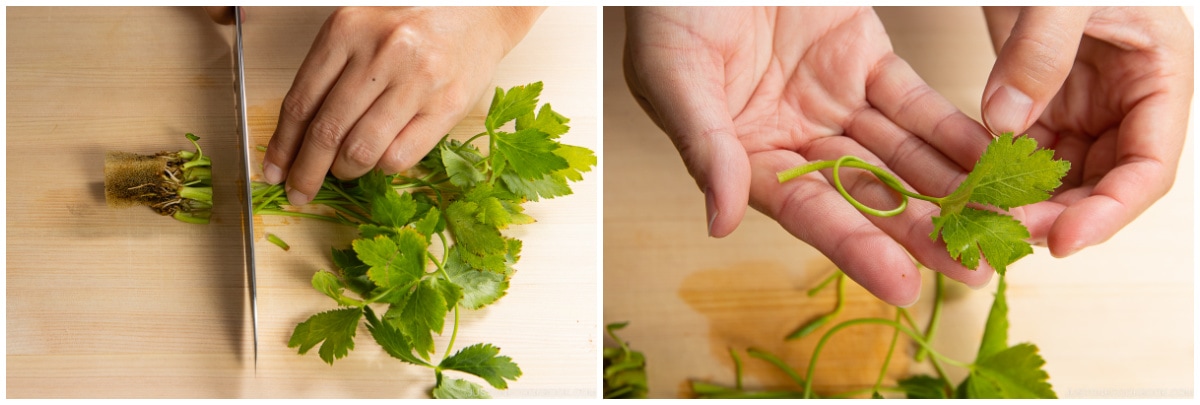
To Make the Custard
- Place a measuring cup or bowl on a kitchen scale and zero the scale. Crack 3 large eggs (50 g each w/o shell) into the cup or bowl and note the weight. Multiply the egg weight by 2.5 to calculate how much dashi to use. The ratio of eggs to dashi is 1 to 2.5. (For example: 150 g eggs x 2.5 = 375 ml dashi.) Now, add your calculated amount of dashi to the eggs. Tip: You may need to adjust the seasonings in the next step proportionate to how much egg you used.
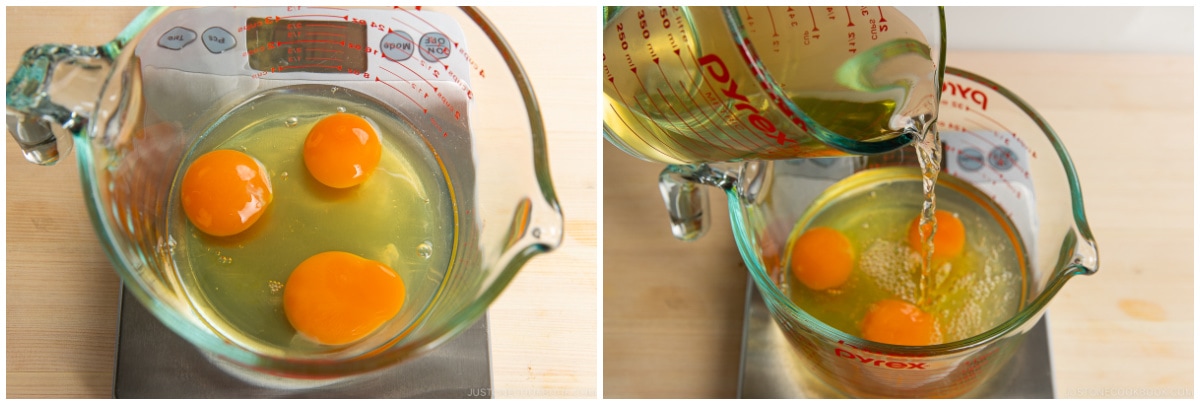
- Next, add 1 tsp mirin, 1 tsp soy sauce, and ½ tsp Diamond Crystal kosher salt to the cup with the eggs and dashi. Tip: Use usukuchi soy sauce, if you have it. This light-colored soy sauce keeps the custard from getting dark.
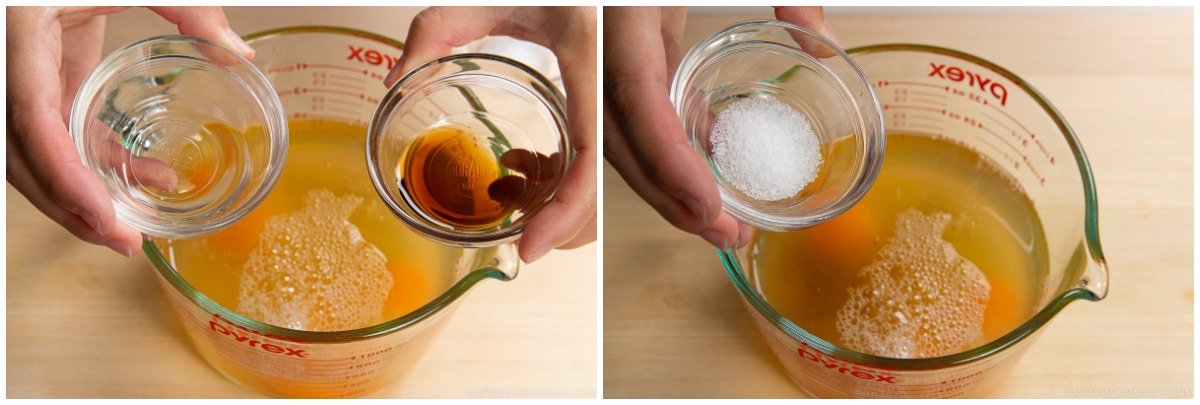
- Whisk it all together. Make sure the egg whites and yolks are combined well.

- Then, strain the egg mixture through a fine-mesh sieve into another bowl. This helps to get a refined silky texture.
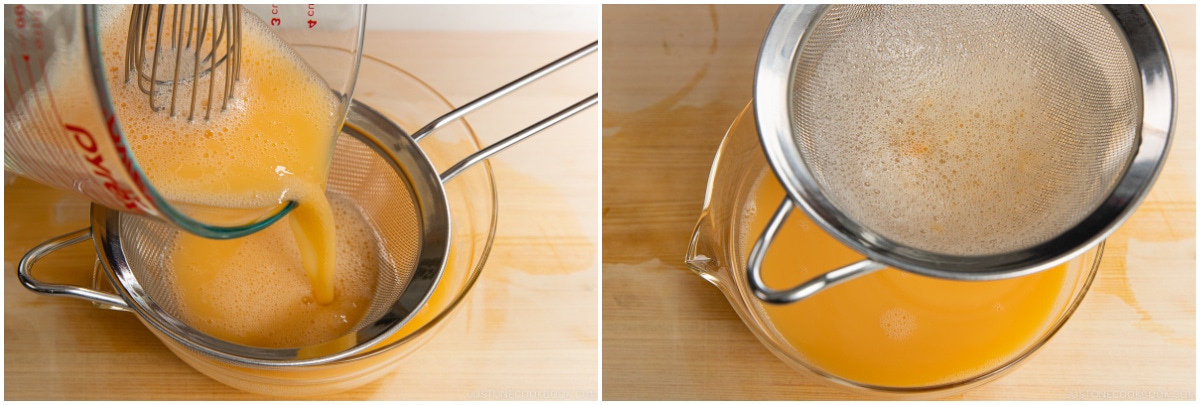
To Assemble the Chawanmushi
- Divide equally all the ingredients into the chawanmushi cups: First, add the chicken (in a single layer), followed by the shimeji mushrooms, and finally the 8 ginkgo nuts (optional).
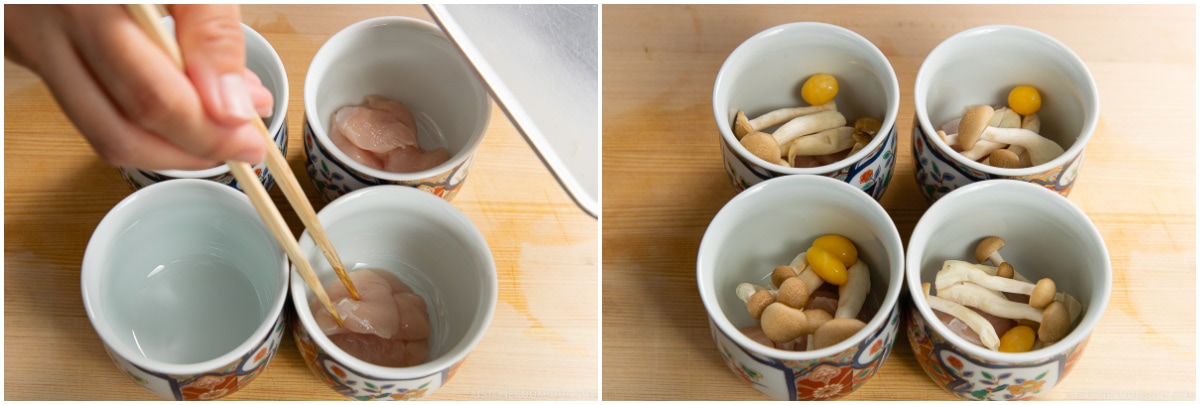
- Then, place the more colorful ingredients like kamaboko and mitsuba on top. Gently pour the egg mixture into the cups about 80% full, leaving some of the top ingredients uncovered. You might not use all the egg mixture due to the size of your cups and the amount of ingredients you added. Remove any air bubbles with a spoon or pop them with a skewer. Tip: Air bubbles will create a rough texture once the custard is cooked.
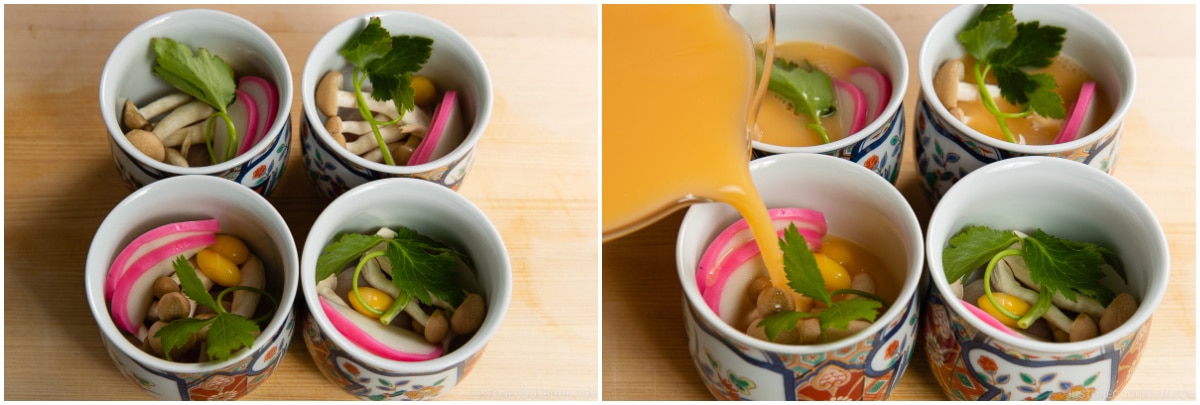
To Steam the Chawanmushi
- Bring the water in the pot to a boil again. Once boiling, reduce the heat to the lowest setting. Carefully place the cups with their lids on in the hot water and cover the pot, leaving the lid slightly ajar. Gently cook for 20 minutes on the lowest heat. If you omit the chicken, cook for only 15 minutes (depending on how much custard is in the cups). Tip: Aim for a temperature of 176–194ºF (80–90ºC) for the simmering water. Do not boil the egg mixture or the finished custard will not be smooth.
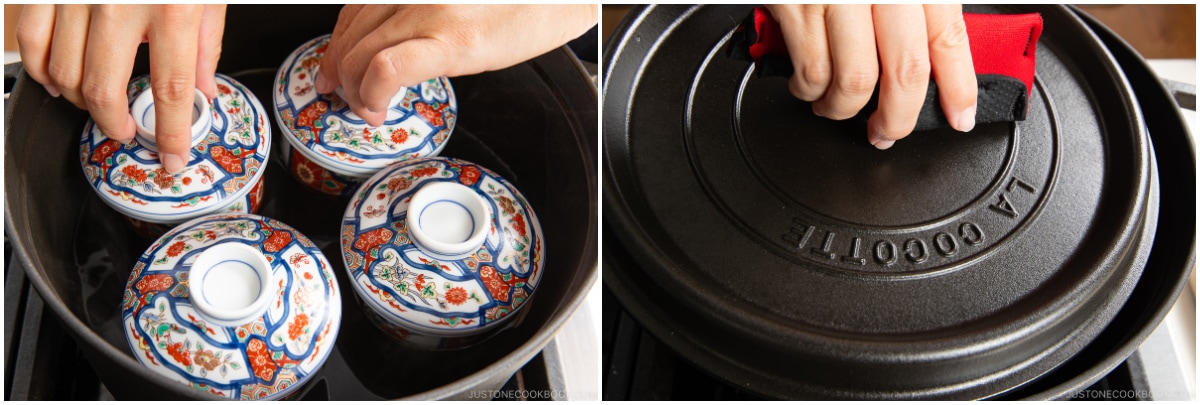
- To check if the Chawanmushi is done, insert a skewer in the center of the steamed custard; if clear liquid comes out, it‘s done. Or, tilt the cup to see if the mixture is runny; it‘s done if the custard is set. Carefully remove the cups from the hot water. I removed the lids first and then the cups themselves using a hot plate gripper (here‘s a similar one).
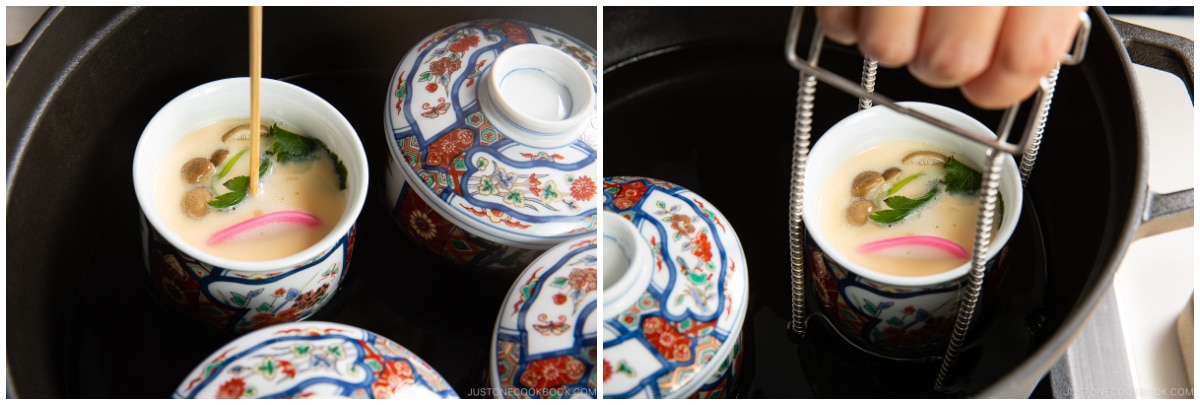
To Serve
- Cover the cups with their lids and serve hot or warm as an appetizer before the main entree. We typically eat the delicate Chawanmushi with a small wooden or lacquer spoon. Try other variations like Chawanmushi with Shrimp and Matsutake Chawanmushi. You can even use a pressure cooker to make Instant Pot Chawanmushi.
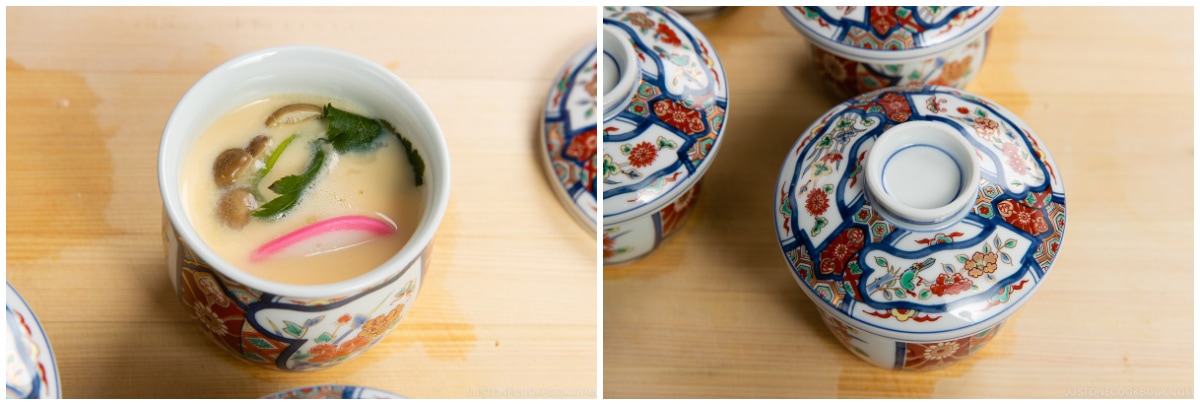
To Store
- You can keep the leftovers in their cups and store in the refrigerator for up to 2 days. To reheat, steam for 2 minutes.
Nutrition
Editor’s Note: This post was originally published on September 7, 2011. It’s been republished on October 2, 2022, with more content, new images, and a slightly revised recipe.
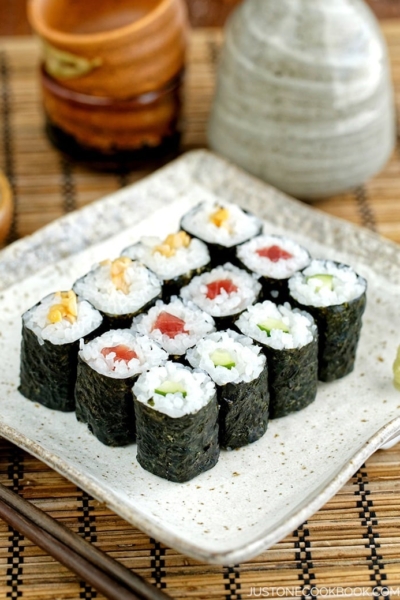
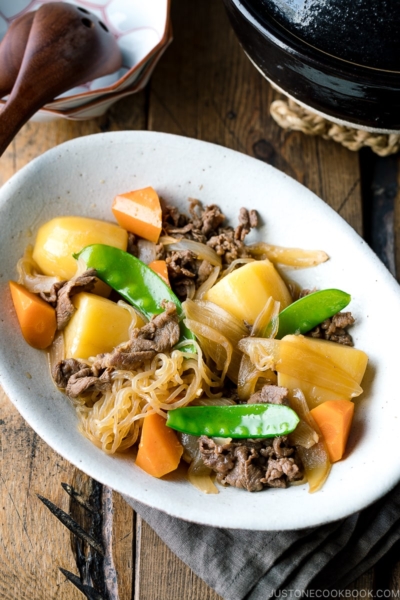
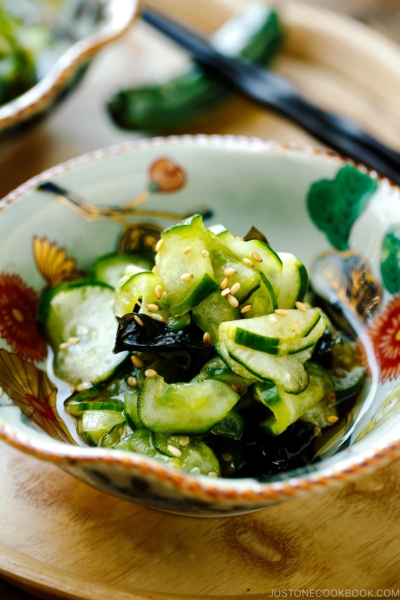
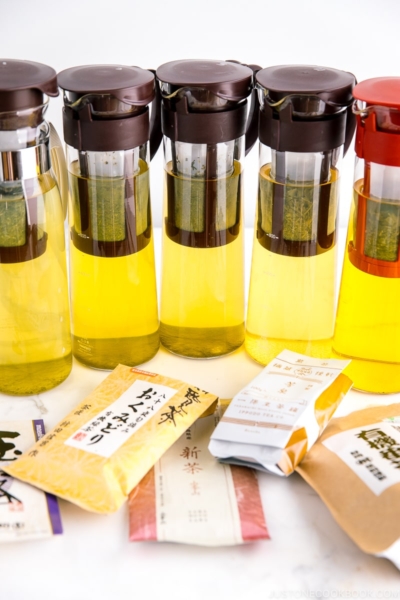




Delicious! Tasted exactly like it was from a Japanese restaurant 🙂 I managed to steam them in my ramekins as well. It was a little watery for my liking- I prefer it more firm. Would add perhaps 1/3 cup of dashi instead of 1/2 next time! 🙂
Hi Gabby! Thank you so much for trying this recipe and for your kind feedback. 🙂 Hope the next one will be adjusted well. 🙂
Hello,
I was wondering, judging from the pictures, do you add the sea urchin and salmon roe as a garnish raw after the dish is steamed ?
Or do you steam it with everything else?
Hi Theophilus Ghoststone! Thank you for asking! It’s for topping only right before serving. I’ll add “Before serving,” to my sentence in the last step by step instruction. Thanks for bringing this to my attention. xoxo
Hi Nami,
I followed the recipe but the egg in the chawanmushi is very watery and didn’t form a custard, can you tell me what I did wrong please?
Casey
Hi Casey! The egg should be cooked if you add heat to it. Since you said “very watery”, I want to ask…
1) How big was your bowl? If it’s bigger than mine, it will take a long time to cook. Especially to get to the center of the mixture.
2) What was your method to steam this dish?
3) Did you use any frozen food that added to the egg mixture?
4) Any substitute or change of method?
It’s kind of impossible that egg didn’t cook after you cook, so I really want to know what has happened…
Hi Nami, thank you for your reply! I used ramekins for creme brûlée since I don’t have any small bowl. I think it’s too thick. I increased the heat and finished cooking the egg though! Didn’t look very pretty but tasted amazing, thank you for the recipe! 🙂
Hi Casey! Ohhhh I didn’t think of that as a reason. Really great point. I’m going to add that to my notes in the recipe. Thank you so much for your feedback!
I tried this recipe today and it was delicious! But my chawanmushi had many holes and didn’t turn out as smooth as yours. I did use less fillings than you did (chicken, carrot, shiitake and naruto fishcake) and steamed it in a steamer on low heat. Any idea why mine had many holes?
Hi Jessica! Thank you for trying this recipe! From the description, it looks like the heat was too strong or cooked too long (due to less filling). You can either 1) lower the heat even more or 2) slightly open the steamer to let go some of the steam, so it’s not as hot. Holes are the indication of the egg being cooked too strong/overcooked.
Hi Nami, I’ve made chawan mushi many times but the surface couldn’t be smooth like yours..What did I do wrong? I’ve tried steaming at very low heat as well, i’ve covered the cups with alumunium foil, but they still look ugly. Any suggestions?
Hi Fiona! Almost always it’s due to the strong heat. How about opening a small gap to release hot air a little bit? You need gentle heat to make Chawanmushi. Oh, how about cooking time? Do you think your cup is smaller and needs to cook less?
It would be very helpful to know what size cup or ramekin is appropriate for this recipe.
Thank you so much.
Hi Anna! I just measured it and it can hold 3/4 cup liquid. With ingredients added to the cup, you will only need 1/4 to 1/2 cup liquid. Hope that helps!
Thank you, thank you. That is very helpful. Not many of us own chawanmushi vessels but most of us have something that will do the job. For me it was just a matter of knowing the size. .
Hi Anna! I should have written the info, and thank you for letting me know! xo Hope you enjoy the recipe!
Video please. I think this pairs well with takikomi gohan (and maybe miso shiro) for a light meal.
Hi Li! Yeah that would be a perfect meal. I’ll think about adding video for this recipe one day. Thank you for your request!
Hi Maya! From what you wrote, I believe your heat was a bit too strong or/and the cooking time was too long. Hope this helps!
Hi Nami,
Your suggestions were spot on. Ever since, I have been able to make it perfectly!
Yay! Thanks for your update! I’m so glad! 🙂
This recipe is absolutely amazing, Nami! I’ve been toying with the idea of making it because my husband ALWAYS orders this when we go to a Japanese restaurant. Him being Japanese, I was afraid I’d ruin it for him! Haha made this tonight and he asked for more! Another plus is that my mother in law approved!!! She said it was perfect! I’m so excited and my husband says he never has to order it from a restaurant again. Thank you so much for this! So delicious!
Hi Charity! Oh wow I’m so flattered and happy that your mother in law and husband approved of this recipe! Great job!!! I’m happy for you too! 😀 Try with seasonal ingredients – it’s much better than one in the restaurants as you can make your OWN version. 🙂
Konnichiwa..
Nami san, would you make a video of Chawanmushi?
Thank you in advance.
Ps: Sorry for my bad english 🙂
Hi Krismiati! I’ll add to my list. 🙂 Your English is excellent! It’s my 2nd language too. 🙂
Hi Nami,
Do you think it would be possible to use the steamer function on an Instant Pot to make Chawanmushi? I guess it might need a bit of experimentation to get the timing right.
Hi Alex! I think so! I haven’t done that before, but that’s a good idea… Let us know if your trial works! 🙂
Hi Nami,
I made the chawanmushi and although it tasted great, the egg custard was not as smooth looking as yours. I was wondering if I should try steaming the egg custard the next time. Thanks, Darlene
Hi Darlene! You can steam it too if you have a steamer. My method works for everyone even without a steamer. From what you wrote, it sounds like the heat was strong. You need the LOWEST stetting. If you already tried with the lowest setting, you might want to turn off the heat as it looks like the heat was strong. But try with a steamer first. 🙂
This is my favorite dish to have when I’m in Tokyo. Can’t wait to try it!
Hi Diana! I hope you enjoy this recipe! 🙂
Hi! I always love your recipes 🙂 Can I ask where to get a cheap cup for steaming chawanmushi? Is it available at daiso? And is konbu available at daiso too? Cos I want to make dashi stock ^^
Could you make a video on how to make aijitsuke egg as well? Thanks! :))
Hi Elaine! Thank you so much for trying my recipes. 🙂
Yes, you can find the chawanmushi cups (usually they have a few designs) at Daiso. I had never paid attention to foods in Daiso, but I think they usually sell snacks and believe they don’t have konbu (I could be wrong). You can find konbu at Japanese/Korean or sometimes Chinese supermarkets. Hope you can find it.
About Ajituke Tamago, okay I’ll write it down on my list of requested recipes. Thank you! 🙂
Hi
I tried the recipe. But I have a problem – after steaming the egg, I find that the chawanshi taste more salty on the bottom of the cup than on the top. Seems like the soy Sauce did not blend well evenly? Can you share how can I avoid this problem?
Thanks in advance.
Hi Z! I made chawanmushi many times but I don’t have any problem with saltiness on the bottom. Maybe mix well until the liquid is all blended? If it bothers then maybe reduce the amount of soy sauce or salt. Or when you eat it, you can scoop from the bottom and mix chawanmushi gently so the flavor is more even. Hope this helps. 🙂
Hi can I make this the day before?
Hi Jolene,
Sure. Please place the Chawanmushi in the refrigerator if you do. However, the Chawanmushi has better texture when you enjoy them on the day you steamed.
Here is another way to shorter the cooking time on the day you eat;
You prepare the ingredients and keep them separately in the refrigerator (Stop at Step 7) the day before.
The next day, assemble the Chawanmushi cup and pour the egg mixture, then steam.
We hope this is helpful.🙂